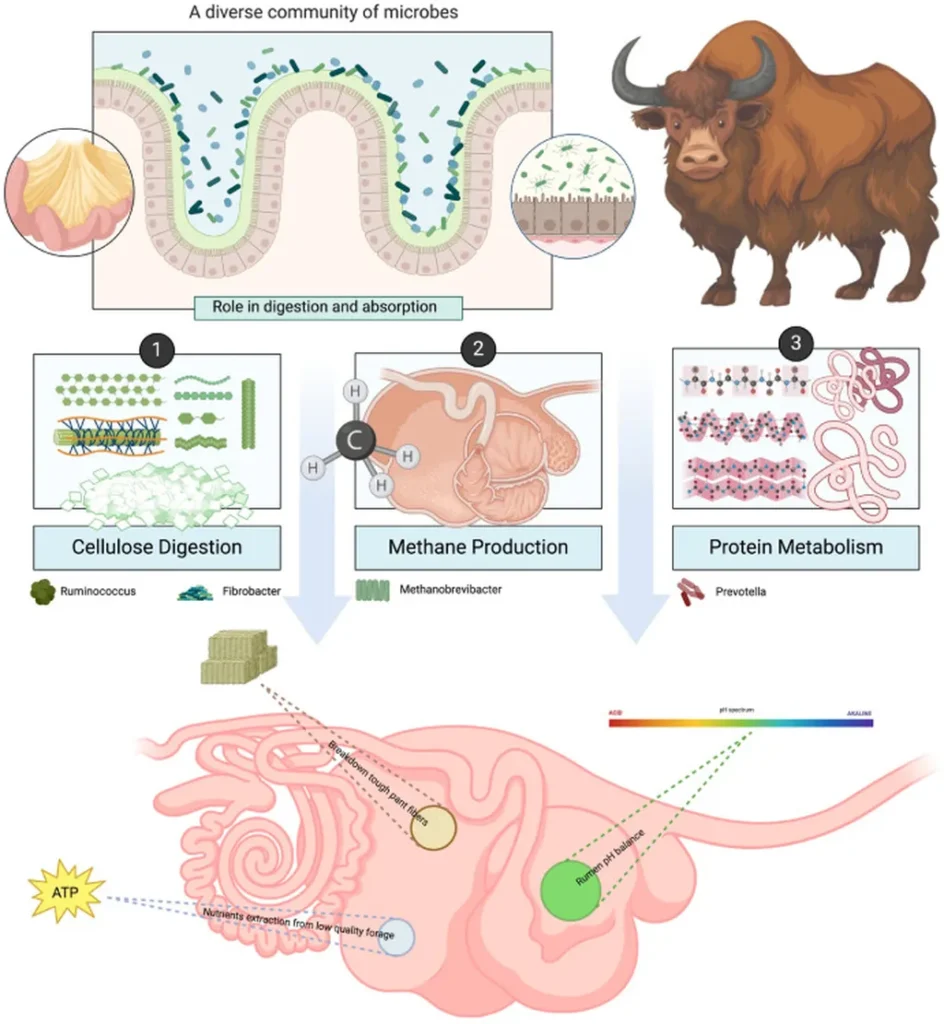In the rugged highlands where yaks thrive, scientists are unraveling the biological secrets that allow these hardy creatures to adapt to the thin air and harsh conditions. A recent study published in *Folia Morphologica* (which translates to “Leaf of Morphology”) has shed new light on how proteins in the intestines of yaks play a crucial role in their ability to survive at high altitudes. The research, led by Y. Zhou from the Life Science and Engineering College at Northwest Minzu University in Lanzhou, China, focuses on the expression and distribution of key proteins—vascular endothelial growth factor (VEGF), VEGF receptor 2 (VEGFR-2), and erythropoietin (EPO)—in the small intestines of yaks at different ages.
The study examined yaks at three distinct life stages: newborn, 50-day-old, and adult. By analyzing tissue samples, the researchers found that these proteins are expressed in the intestinal villi of yaks at all ages, but their levels vary significantly depending on the age and specific section of the intestine. For instance, EPO expression was notably higher in the jejunum and duodenal villous epithelial cells of newborn yaks compared to older yaks. Similarly, VEGF expression was elevated in the ileum and jejunum of newborn yaks, while VEGFR-2 levels were highest in 50-day-old yaks across all sections of the small intestine.
These findings suggest that these proteins may be critical in regulating the physiological responses of yaks to hypoxic environments, a key factor in their adaptation to high-altitude living. “The expression and distribution characteristics of EPO, VEGF, and VEGFR-2 in yak intestinal tissues of different ages indicate that these proteins may be involved in the physiological regulation of yak intestines in hypoxic environments,” Zhou explained. “It may be an important regulatory protein in yak adaptation to a high altitude and low oxygen environment.”
The implications of this research extend beyond basic biology. Understanding how yaks adapt to extreme conditions could have significant commercial impacts, particularly in the energy sector. As the world seeks to develop more resilient and efficient energy solutions, the biological mechanisms that allow yaks to thrive in harsh environments could inspire new technologies. For example, the proteins identified in this study could potentially be harnessed to develop bioengineered crops or livestock that are more resilient to environmental stress, thereby improving agricultural productivity in challenging regions.
Moreover, the insights gained from this research could inform the development of new medical treatments for humans. The proteins involved in yak adaptation to hypoxia could provide clues for treating conditions related to low oxygen levels, such as chronic obstructive pulmonary disease (COPD) or high-altitude sickness. By studying these proteins, scientists may uncover novel therapeutic targets that could improve human health and well-being.
The study published in *Folia Morphologica* represents a significant step forward in our understanding of yak biology and its broader implications. As researchers continue to explore the intricate mechanisms of adaptation, the potential applications of this knowledge are vast and promising. The work of Y. Zhou and colleagues not only advances our scientific understanding but also opens new avenues for innovation in agriculture, energy, and medicine.

